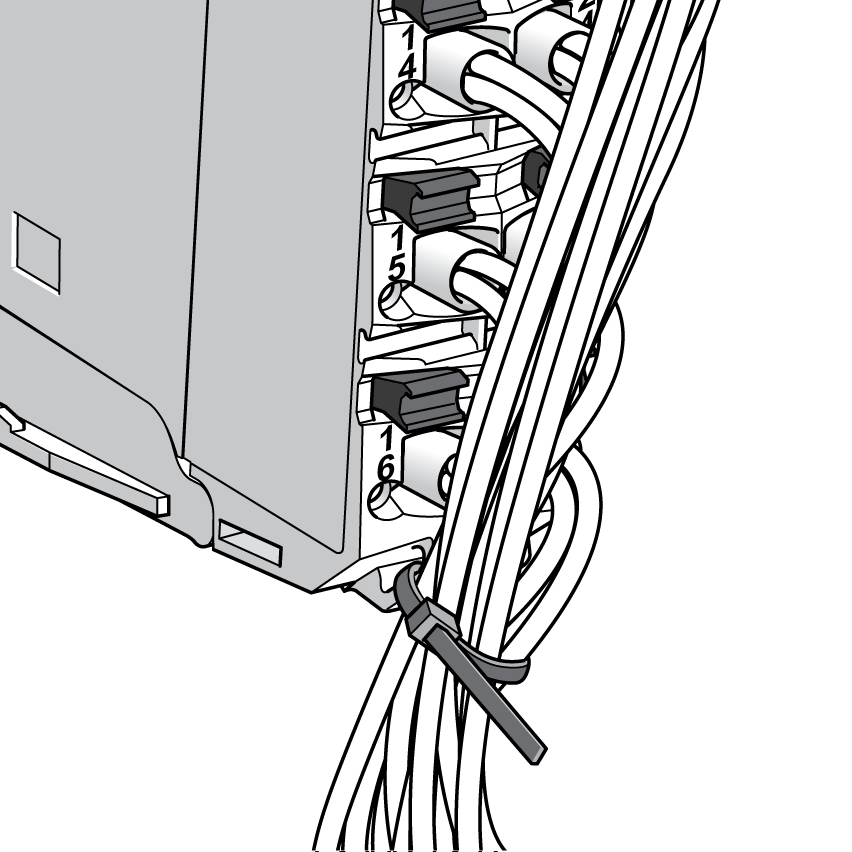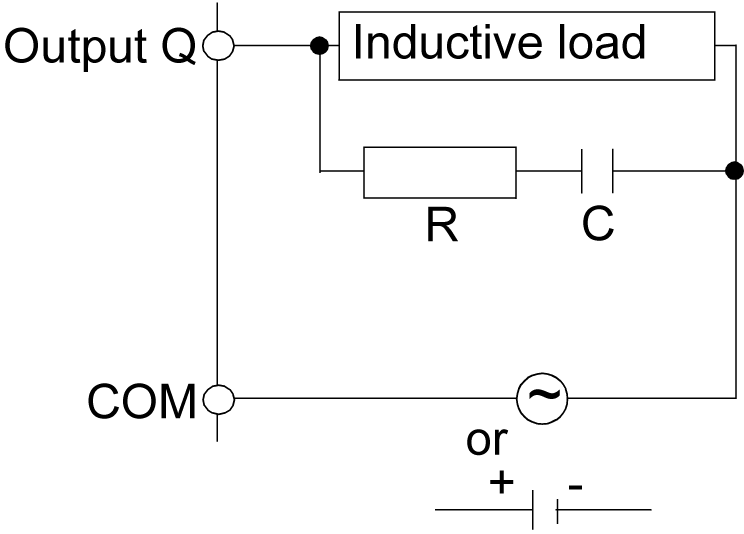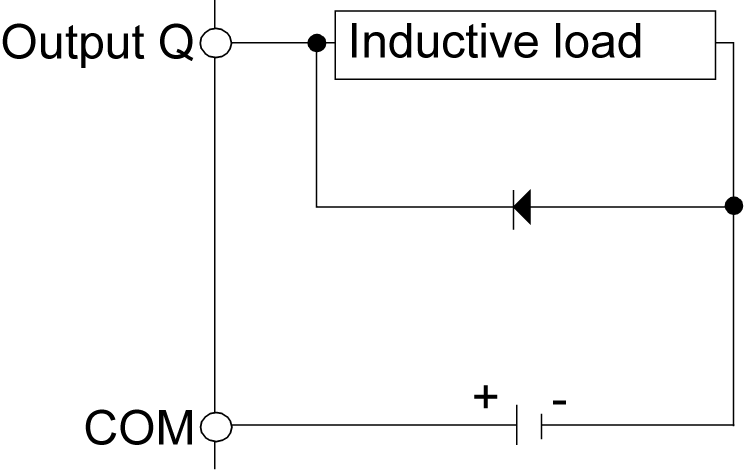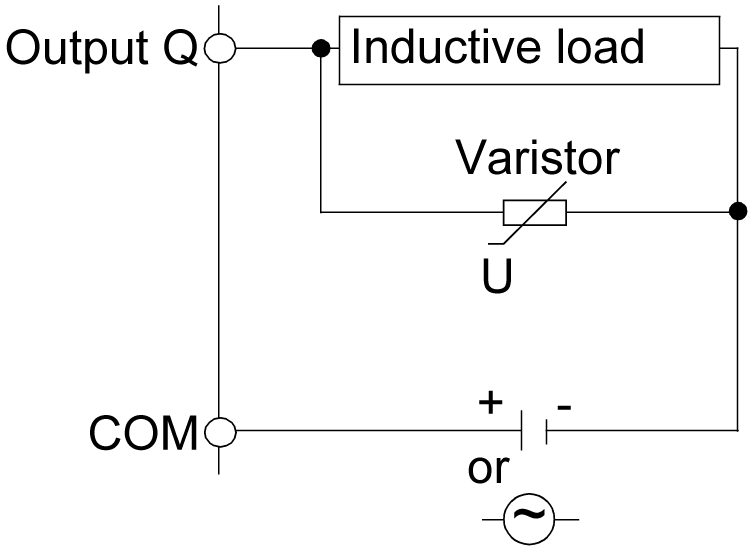There are several rules that must be followed when wiring the TM5 System.
|
|
|
HAZARD OF ELECTRIC SHOCK, EXPLOSION OR ARC FLASH |
|
oDisconnect all power from all equipment including connected devices prior to removing any covers or doors, or installing or removing any accessories, hardware, cables, or wires except under the specific conditions specified in the appropriate hardware guide for this equipment. oAlways use a properly rated voltage sensing device to confirm the power is off where and when indicated. oReplace and secure all covers, accessories, hardware, cables, and wires and confirm that a proper ground connection exists before applying power to the unit. oUse only the specified voltage when operating this equipment and any associated products. |
|
Failure to follow these instructions will result in death or serious injury. |
The following rules must be applied when wiring the TM5 System:
oI/O and communication wiring must be kept separate from the power wiring. Route these 2 types of wiring in separate cable ducting.
oVerify that the operating conditions and environment are within the specification values.
oUse proper wire sizes to meet voltage and current requirements.
oUse copper conductors only.
oUse twisted pair, shielded cables for analog, expert, or fast I/O and TM5 bus signals.
oUse twisted pair, shielded cables for encoder, networks and fieldbus (CAN, serial, Ethernet).
Use shielded, properly grounded cables for all analog and high-speed inputs or outputs and communication connections. If you do not use shielded cable for these connections, electromagnetic interference can cause signal degradation. Degraded signals can cause the controller or attached modules and equipment to perform in an unintended manner.
|
|
|
UNINTENDED EQUIPMENT OPERATION |
|
oUse shielded cables for all fast I/O, analog I/O and communication signals. oGround cable shields for all analog I/O, fast I/O and communication signals at a single point1. oRoute communication and I/O cables separately from power cables. |
|
Failure to follow these instructions can result in death, serious injury, or equipment damage. |
1Multipoint grounding is permissible if connections are made to an equipotential ground plane dimensioned to help avoid cable shield damage in the event of power system short-circuit currents.
Refer to the section Grounding the TM5 System to ground the shielded cables.
This table provides the wire sizes to use with the removable spring terminal blocks (TM5ACTB06, TM5ACTB12, TM5ACTB12, TM5ACTB12PS, TM5ACTB32):

This table provides the wire sizes to use with the TM5ACTB16 terminal blocks:

|
|
|
FIRE HAZARD |
|
oUse only the correct wire sizes for the maximum current capacity of the I/O channels and power supplies. |
|
Failure to follow these instructions will result in death or serious injury. |
The spring clamp connectors of the terminal block are designed for only one wire or one cable end. Two wires to the same connector must be installed with a double wire cable end to help prevent loosening.
|
|
|
LOOSE WIRING CAUSES ELECTRIC SHOCK |
|
Do not insert more than one wire per connector of the spring terminal blocks unless using a double wire cable end (ferrule). |
|
Failure to follow these instructions will result in death or serious injury. |
Inserting an incorrect terminal block into the electronic module can cause unintended operation of the application and/or damage the electronic module.
|
|
|
ELECTRIC SHOCK OR UNINTENDED EQUIPMENT OPERATION |
|
Connect the terminal blocks to their designated location. |
|
Failure to follow these instructions will result in death or serious injury. |
NOTE: To help prevent a terminal block from being inserted incorrectly, ensure that each terminal block and electronic module is clearly and uniquely coded.
TM5 Strain Relief Using Cable Tie
There are 2 methods to reduce the stress on cables:
oThe terminal blocks have slots to attach cable ties. A cable tie can be fed through this slot to secure cables and wires to reduce stress between them and the terminal block connections.
oAfter grounding the TM5 System by means of the grounding plate TM2XMTGB, wires can be bundled and affixed to the grounding plate tabs using wire ties to reduce stress on the cables.
The following table provides the size of the cable tie and presents the two methods to reduce the stress on the cables:
|
Cable Tie Size |
Terminal Block |
TM2XMTGB Grounding Plate |
|---|---|---|
|
Thickness |
1.2 mm (0.05 in.) maximum |
1.2 mm (0.05 in.) |
|
Width |
4 mm (0.16 in.) maximum |
2.5...3 mm (0.1...0.12 in.) |
|
Mounting illustration |

|

|
|
|
|
ACCIDENTAL DISCONNECTION FROM PROTECTIVE GROUND (PE) |
|
oDo not use the TM2XMTGB Grounding Plate to provide a protective ground (PE). oUse the TM2XMTGB Grounding Plate only to provide a functional ground (FE). |
|
Failure to follow these instructions can result in death, serious injury, or equipment damage. |
Protecting Outputs from Inductive Load Damage
Depending on the load, a protection circuit may be needed for the outputs on the controllers and certain modules. Inductive loads using DC voltages may create voltage reflections resulting in overshoot that will damage or shorten the life of output devices.
|
|
|
INDUCTIVE LOADS |
|
Use an appropriate external protective circuit or device to reduce the risk of inductive direct current load damage. |
|
Failure to follow these instructions can result in death, serious injury, or equipment damage. |
If your controller or module contains relay outputs, these types of outputs can support up to 240 Vac. Inductive damage to these types of outputs can result in welded contacts and loss of control. Each inductive load must include a protection device such as a peak limiter, RC circuit or flyback diode. Capacitive loads are not supported by these relays.
|
|
|
RELAY OUTPUTS WELDED CLOSED |
|
oAlways protect relay outputs from inductive alternating current load damage using an appropriate external protective circuit or device. oDo not connect relay outputs to capacitive loads. |
|
Failure to follow these instructions can result in death, serious injury, or equipment damage. |
Protective circuit A: this protection circuit can be used for both AC and DC load power circuits.

C Value from 0.1 to 1 μF
R Resistor of approximately the same resistance value as the load
Protective circuit B: this protection circuit can be used for DC load power circuits.

Use a diode with the following ratings:
oReverse withstand voltage: power voltage of the load circuit x10.
oForward current: more than the load current.
Protective circuit C: this protection circuit can be used for both AC and DC load power circuits.

In applications where the inductive load is switched on and off frequently and/or rapidly, ensure that the continuous energy rating (J) of the varistor exceeds the peak load energy by 20 % or more.